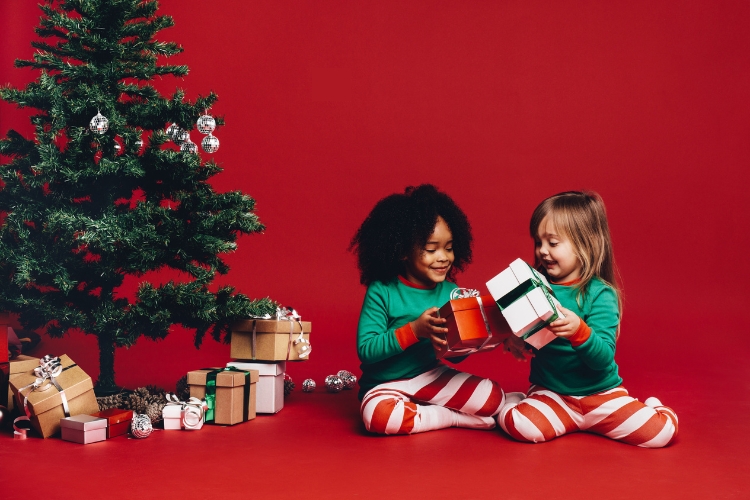I saw this quote on a Christmas card sent to me from a family I work with and boy did it stick with me.
The holidays are challenging enough for adults to process through. Add on a child who is out of routine, dealing with the unknown, bombarded by sensory experiences, but expected to be calm.
Do you ever wonder why your child acts up during the holidays?
Does your child turn into The Grinch during the holidays… causing havoc everywhere they step? For most, being out of a routine is challenging, which is usually what occurs during the holiday season. School is out, there is a lack of structure, meal times aren’t a frequent, sugar is consumed more and there are many new experiences occurring.
Despite this being typical for most, there are some children who just aren’t able to process the out-of-sync feeling as well.
Now no judgement to you parents! You have a lot going on too. Preparing for the holidays is overwhelming. I want to encourage you to read these next top tips, and see how you can implement them to support your entire family.
Top suggestions for a calm & bright holiday.
1 – Flexibility is key
It is important to understand that the plans you have in your head for your child… might be too much for them. Understanding their limits, their trigger/challenges, and how far past their threshold they can go is key. You might have to leave an event early.
You might have to say no to multiple events in one day. Too many unknowns in a week might cause your child to become upset, or overwhelmed. The changes in their environment and how it could bombard their sensory system should be at the forefront of awareness for a family.
2 – Maintain a schedule
Keeping a schedule, or a simple routine can help your child immensely to have the capacity to adapt to events or other changes in the schedule. Making sure they have enough rest before, and after events will allow their systems to reset. Eating meals around the typical times, and making sure there is enough filling food on their plates. All of this will allow them to accept changes in their routine with more ease.
3 – Build in an exit strategy
During events if you are seeing the beginning signs of overwhelm, it might be time to say your goodbyes. Making sure you and your family knows what signs to look for. You can have a keyword that your family knows it is time to pack up, and fast.
4 – Prep your child
Most children will be more calm if you provide then with the expectations. Have a chat with your child about the events leading up to the large event, activities happening during the event, and even if there are specific expectations for them during the event would be best.
Imagine if you got invited to a party, but wasn’t sure what type of party. It could be a birthday party, a Halloween party, or even a wedding. You wouldn’t know what to wear, what to bring, how long the event would last for or what was expected from you. This is how your child feels.
5 – Encourage calming activities
I’ll always encourage calming strategies leading up to, during, and after events. It can take no more than 5 minutes out of your schedule, but have such a positive impact on the outcome of attending large events. Knowing which strategies work for your child is key.
I always suggest a big movement action, paired with a small focused one. Thing like animal walks, jumping games, or crashing activities are are large movements that provide calming input into the whole body. Small focused movements like blowing out pretend candles, blowing bubbles, or different finger movements for focused attention are great to re-center.
I hope these strategies provide you and your family with some relief to enter into some large holiday events with some peace of mind. If you are finding these events, or even smaller ones, to be more and more challenging and you aren’t sure how to help your child reach out! I loved to find out if more individualized suggestions might be needed.










